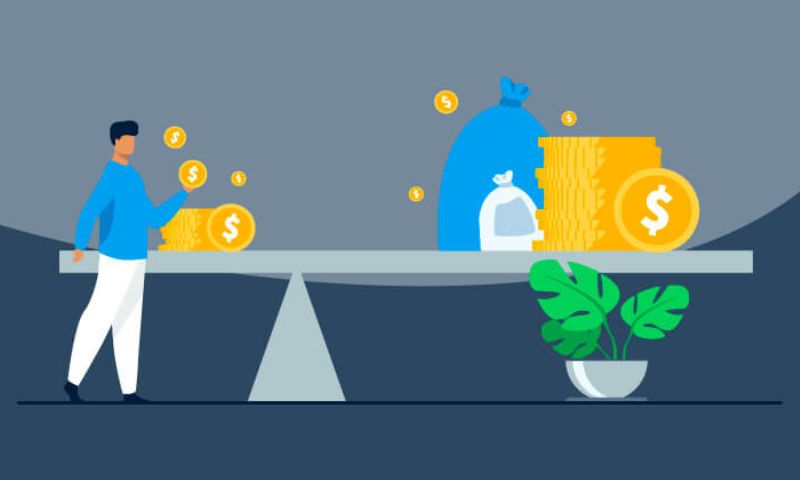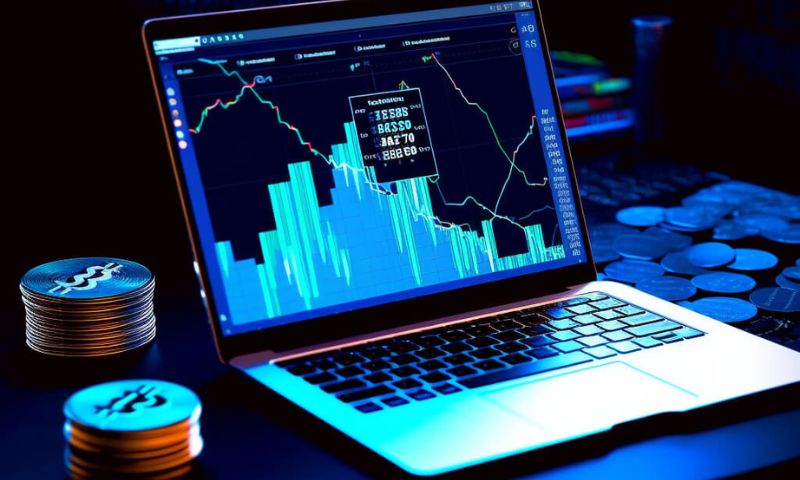Navigating the Risky Waters: Regulations Surrounding Crypto Margin Trading
I live in the thick of crypto margin trading, where every move can mean high reward or steep loss. But it’s not just about knowing the game; it’s about playing by the rules. Regulations surrounding crypto margin trading keep the playing field level and everyone informed. Dive in with me as we break down the basics, comply with the watchdogs, strategize our risks, and stay sharp on the latest safeguards. Get ready, because this is where finance meets the future head-on.
Understanding the Basics of Crypto Margin Trading
The Role of Leverage in Crypto Trading
In crypto, leverage lets you trade more than what you have. Think of it as a boost. It can increase your wins, but also your losses. So, it’s a tool that you use with caution.
Leverage in crypto trading works like this: say you have $100. With 5x leverage, you can trade as if you have $500. Bigger trades, bigger risks. It’s thrilling and scary, like a roller coaster.
To use leverage, you borrow money. But if prices drop, you may face a margin call. This means you must add more money to your account right away. If you can’t, your trade may get closed early to cover the loan.
Rules and Regulations of Margin Trading Cryptocurrencies
Everywhere has rules for margin trading crypto. These include crypto leverage laws and margin trading rules. Why? To keep trading safe and fair. Legal crypto trading requires following these rules closely.
For instance, in the US, the Commodity Futures Trading Commission (CFTC) sets the rules. They say what you can and can’t do. They make sure no one is cheating the system.
Margin trading rules protect everyone. They help prevent bad debt and big losses. Some rules limit how much leverage you can use. This caps the risk. Different countries have different caps.
Securities regulators keep an eye on crypto markets. They check that traders follow crypto trading guidelines. If you don’t, there can be big fines or worse. The rules are there to stop financial crimes and protect you.
When you trade on margin, there’s also KYC. KYC means the platform knows who you are. So does anti-money laundering crypto law. These keep the market clean from dirty money.
For a platform to offer margin trading, they must follow the law. They have to get a crypto margin trading license. This means a lot of paperwork and checks to show they are safe and fair.
Different places mean different rules. International crypto trading laws vary a lot. This makes trading across borders tricky. You need to know the local rules wherever you trade.
In short, margin trading in crypto is not child’s play. It comes with rules to keep the playground safe. You must know the rules well to play the game right. Always stay informed and trade safely.
Compliance and Regulatory Environment for Crypto Margin Trading
Navigating International Laws and Regulatory Bodies
Let’s talk rules. Every game has them, right? Well, crypto margin trading is no game, but it sure has a lot of rules. Trading crypto with leverage is like using a slingshot; you can launch further, but it makes it risky. Countries have different laws to keep this in check. They set caps on how much leverage you can use. These caps help prevent big market crashes. It’s like having training wheels on a bike. It might seem less fun, but it keeps you safe.
Not just any shop can offer crypto margin trading either. They need a license for that. This is where things like crypto margin calls come into play. What’s a crypto margin call? It’s a wake-up call saying you need more money in your account or your trade gets shut down. This helps to stop losses from getting out of hand.
Implementing AML and KYC Measures in Crypto Transactions
Now, onto keeping things clean. We don’t like dirty money in crypto. To clean up, we do two big things: AML and KYC. AML stands for Anti-Money Laundering. It’s a set of laws to stop bad guys from hiding their bad money in crypto. To follow these rules, crypto businesses keep an eye out for fishy trades. They have to check if the money moving around is legit.
KYC, or Know Your Customer, is like AML’s sidekick. It’s the process where you prove who you are when you sign up for a crypto account. You’d usually show your ID or passport. It’s like the bouncer checking your ID before letting you into a club. It makes sure they know who’s trading. This step is key for protecting everyone using crypto.
Both AML and KYC keep everyone on the straight and narrow. It’s not just about following the law. It’s about building trust. When we trust a crypto platform, we feel safe to trade there. It’s like knowing there’s a lifeguard at the pool. You know someone’s got your back.
Crypto trading platforms have to follow these rules tight. They can’t just nod and say they got it. They have to show they’re doing the right thing. They fill out papers and send them to regulators. This proves they’re not messing around.
So, to wrap this up, crypto margin trading has lots of rules. But they’re here for good reason. They keep the market from going wild and protect our money. And just like in any community, we need rules to keep things fair and safe. Regulations are the guardrails on our crypto trading highway. Let’s keep the ride smooth and secure!
Risk Management Strategies in Crypto Margin Trading
Establishing Effective Margin Requirements
Crypto leverage laws set limits on money we can borrow for trades. Margin trading rules set by exchanges help protect both trade platforms and us, the traders. When trading legally in crypto, we must meet margin requirements for crypto trades. These rules tell us how much of our money we must keep in a trade.
Margin requirement amounts change with market moves. Exchanges doing business right will track these changes. They keep an eye on margins to reduce default risk in crypto trading. This helps everyone know their money is safe, even when price swings get wild.
It’s all about balance. With smart margin rules, surprised traders won’t get stuck with no way to pay back borrowed money. Incorporating these practices means better risk control for everyone.
Procedures for Crypto Margin Calls and Liquidations
A crypto margin call happens when the value of our account drops. It drops below the set margin limit. This call is like an alert. It tells us to put in more money to cover our trade. Now, we have two choices. We add more money, or we sell some of our assets to fix the balance.
If we can’t meet the margin call, here comes “margin liquidation.” That means the exchange sells our assets. They sell at the current price to get the borrowed money back. This process is part of the measure exchanges take to manage risk. Crypto market leverage caps are there for this reason, to prevent big losses.
Every trade platform has its rules for margin calls and liquidations. But, across the board, they follow legal crypto trading guidelines. This keeps things fair and everyone knows what plays are off-limits.
That’s the rundown on keeping trades safe. We follow the rules, know the risks, and trade smart. When we do that, we help keep the crypto trade world turning right.
Regulatory Developments and Investor Protections
Adapting to Changing Crypto Trading Leverage Limits
New rules keep popping up in the world of crypto trading. One hot topic is leverage. This is how much you can borrow to trade. Think of it like a booster; it can help you make bigger trades than with just your money. But there’s a catch. It also increases risk — risk of losing big.
Governments are now putting caps on leverage. Why? They want to keep the market safe. They say, “Play, but don’t go too wild.” These laws limit how much money traders can use to boost their trades. They aim to stop sad stories of big losses. When you trade with leverage, you must know these limits. It’s all in the margin trading rules.
Role of Securities Regulators in Safeguarding Crypto Investors
Another group that’s super important here? Securities regulators. Think of them as lifeguards in the risky waters of trading. They set rules to protect you and me. And they keep an eye out for tricky business. They follow margin lending policies and fight sneaky moves like money laundering.
Securities watchdogs also check how trading platforms act. They see if things are fair and square. They tell these platforms, “Show us how you manage risk and protect your users.” These rules include making traders give important info through Know Your Customer (KYC) steps.
By teaching investors and setting clear guidelines, these guardians help keep our trades as safe as possible. They also step in if things go south. If you don’t follow the margin call, they’ll make sure your trade is cut. They want to lower the default risk in trading. This way, no one takes on too much risk. They can’t borrow too much and then not be able to pay it back.
To sum it up, laws for crypto leverage and regulators together aim to keep trading fair. They want to ensure we don’t take on more than we can handle. With new caps on leverage and strict oversight, they help steer us clear from big trouble. So, when you dive into the deep end of trading, remember these rules and guides. They’re here to help, after all. And knowing what they do can make our trading adventure safer and more fun.
We’ve journeyed through the world of crypto margin trading today, exploring how leverage can both empower and risk traders. We’ve unpacked rules and dived into compliance, understanding that different countries have their own laws to follow.
Key to trading success is managing risks. Knowing when to hold on and when to let go can save you from big losses. We’ve learned that margin calls aren’t fun, so staying smart with our choices is key.
Crypto trading is like a wild roller coaster, with ups and downs that can thrill or chill. Rules change, and staying protected as an investor means keeping up and adapting. In this ever-changing landscape, stay sharp, stay informed, and trade with your head on straight. Remember, margin trading isn’t child’s play; it’s a game for the informed and the brave. Keep these insights in your back pocket and trade with confidence.
Q&A :
Frequently Asked Questions on Regulations Surrounding Crypto Margin Trading
What are the legal requirements for cryptocurrency margin trading?
Margin trading in cryptocurrency involves borrowing funds to trade assets, increasing potential profits but also the risks. Legal requirements for crypto margin trading can vary significantly by country or jurisdiction and may include exchange licensing, user identity verification (KYC), anti-money laundering (AML) compliance, and reporting transactions to financial authorities. Some countries may impose bans or stringent rules on leverage levels offered to traders.
How do regulations impact margin trading for cryptocurrencies?
Regulations impact crypto margin trading primarily by setting limits on leverage, imposing strict operational guidelines for exchanges, and ensuring customer protection. Regulators aim to mitigate systemic risk and protect retail investors from excessive losses that can be exacerbated by high leverage in margin trading. Compliance with regulations also impacts the cost of trading, as well-funded exchanges are required to pay for licenses and adhere to financial reporting standards.
Can US residents legally engage in crypto margin trading?
In the United States, crypto margin trading is regulated by various federal agencies, and its legality can depend on how the activity is classified. Some platforms offer margin trading with compliance with the Commodity Futures Trading Commission (CFTC) rules for derivatives. However, following guidelines provided by the Financial Crimes Enforcement Network (FinCEN) and the Securities and Exchange Commission (SEC) is critical for both exchanges and traders.
What measures are taken to protect investors in crypto margin trading?
To protect investors in crypto margin trading, regulatory bodies may enforce measures like capping the maximum allowable leverage, mandating clear disclosure of risks, and imposing financial responsibility on exchanges. Furthermore, the requirement for risk warnings, educational materials, and sometimes limitations on retail access to high-leverage products are ways regulators seek to protect investors from potential significant losses.
How do changes in regulation affect global crypto margin trading platforms?
Changes in regulation can affect global crypto margin trading platforms by altering their operational framework, which can influence their user base, trading volume, and overall market dynamics. For instance, a clampdown in a major market might cause platforms to shift their focus to other jurisdictions or adjust their services to comply with new rules. Such regulations can lead to changes in platform accessibility, liquidity, and the variety of instruments offered.
Note: It is important for individuals to consult with financial advisors or conduct their own thorough research to understand the specific regulatory environment that applies to their situation before engaging in crypto margin trading.






